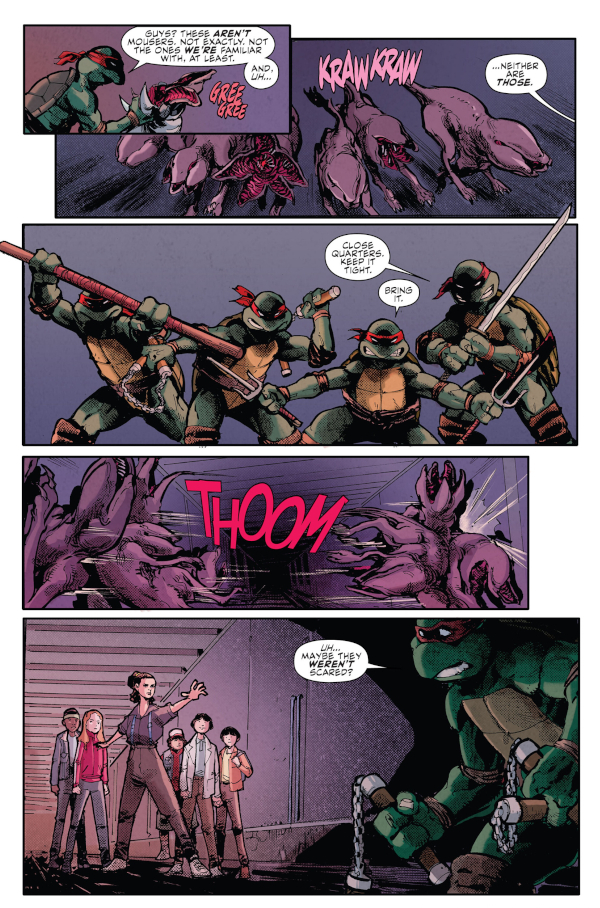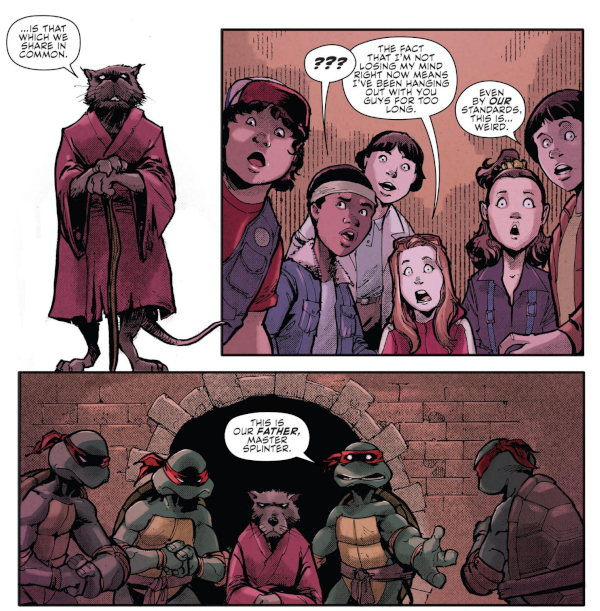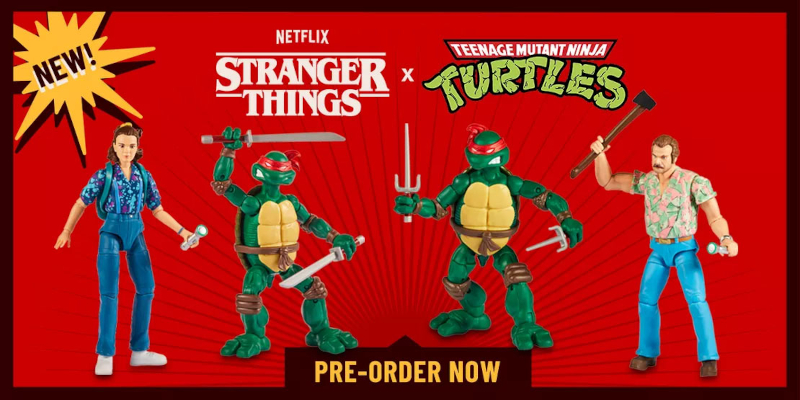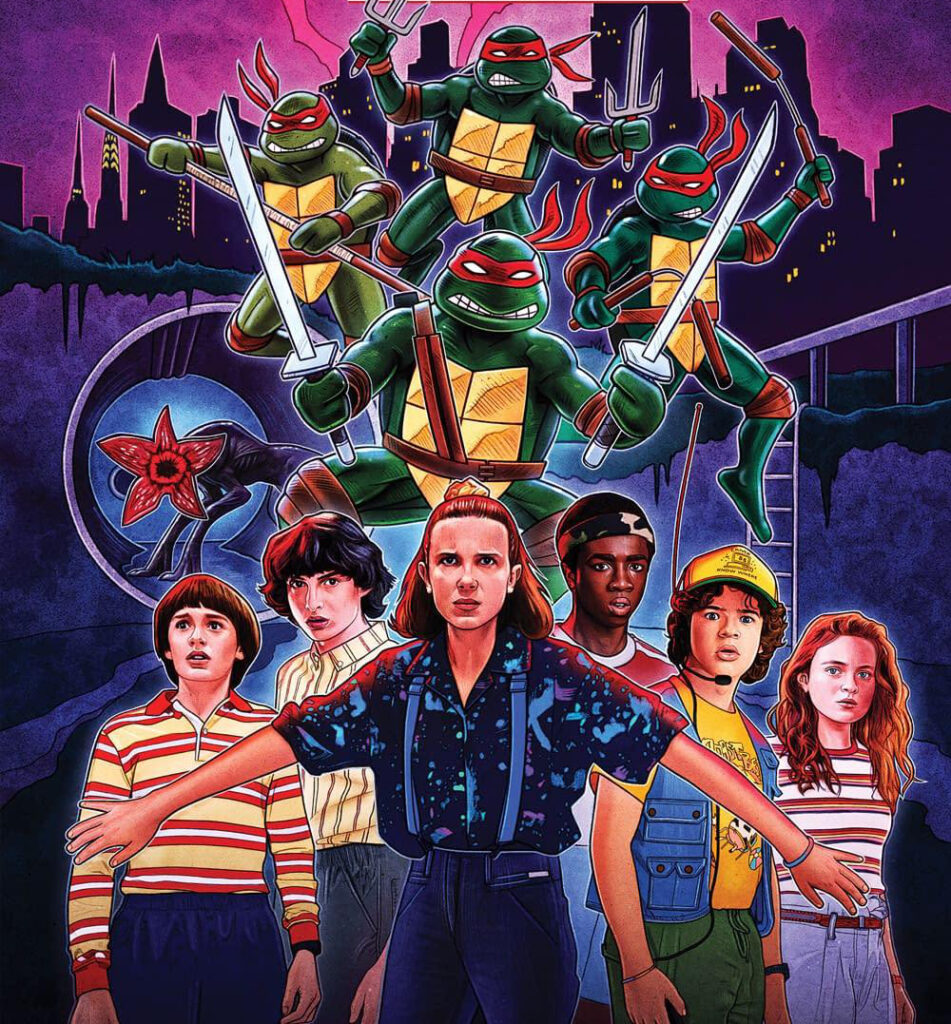I’m not exactly sure where the origins lie for the 2023 comic crossover between the Teenage Mutant Ninja Turtles and Stranger Things. Given that in the previous year Japanese toymaker Bandai brought out a series of box set action figures which combined the two franchises, I’d guess that there was an element of corporate synergy behind it. The fact that the comic works so well in spite of this is testament to the richness of these properties, and to the amount of affection and attention put in by the mini-series creators.

Even at first glance, the pairing starts to make sense. The Netflix TV show Stranger Things has been in production since 2016, but it’s 4 seasons to date have been respectively set in the years 1983-1986. This comic is set between seasons 2 and 3, which would be 1984-1985, and which is also the period in which Kevin Eastman and Peter Laird started to self-publish the first few issues of the Teenage Mutant Ninja Turtles comic. In fact, by mid 1985, the first 4 issues of TMNT had introduced not only the Turtles, but also crazy inventor Baxter Stockman and his murderous robots The Mousers, April O’Neil, and the freakish brain-aliens The Utroms (known more popularly as The Krang in the cartoon series). It makes total sense to fold all these into a common narrative with Eleven, Mike, Dustin and all the other Stranger Things kids.

The similarities continue; the Turtles spend their lives hiding in subterranean sewers, while the adventures of the Hawkins kids are driven by their discovery of the Upside-Down, a dark dimension accessed under the ground beneath their feet. The robotic Mousers are a perfect match for the ravenous Demo-dogs from Stranger Things season 2. And possibly most importantly, the adolescent banter and focus on the bonds of family/friendship run as a core theme through both franchises.
Credit needs to go to writer Cameron Chittock for recognising these similarities and making them all dove-tail together so well. His plot runs at a cracking pace, and wastes no time over the relatively short course of the 4-issues. The voices of all the characters are captured fairly well, and there is a nice arc to the maturing relationship between the two parties of heroes.

As an old school fan of the original-era Turtles, a major draw for me was the art of Fero Pe, which beautifully captures the early style of Eastman and Laird. As per the original issues, the Turtles all wear red bandanas (the multicolours were not introduced until the cartoon in 1987). Pe’s character design itself is a perfect pastiche of the brutally angular early Turtles, and even his inking techniques match the heavily textured blacks and the use of stippling (black dots) to create gray-scale. You could genuinely place this artwork next to those early issues and say it was a forgotten work from the same era.

Finally, I really appreciated some nods made to lesser-known creators who were intrinsic to supporting the Turtles over the first few years. ‘Lavigne Street’ is a reference to Steve Lavigne, the first artist employee hired by Eastman and Laird to join Mirage Studios in 1985, and the creative behind much of the licensed TMNT images of that decade. ‘Officer Lawson’ shares a name with Jim Lawson, another key artist for Mirage Studios, who drew the longest continuous run of the original series in the early 90’s. The Turtles themselves have long outgrown their humble roots in those original comics, with the lore now folding in elements from countless cartoons, movies and computer games. But it’s still a real treat to see a call back to the niche mythos it all started from.


